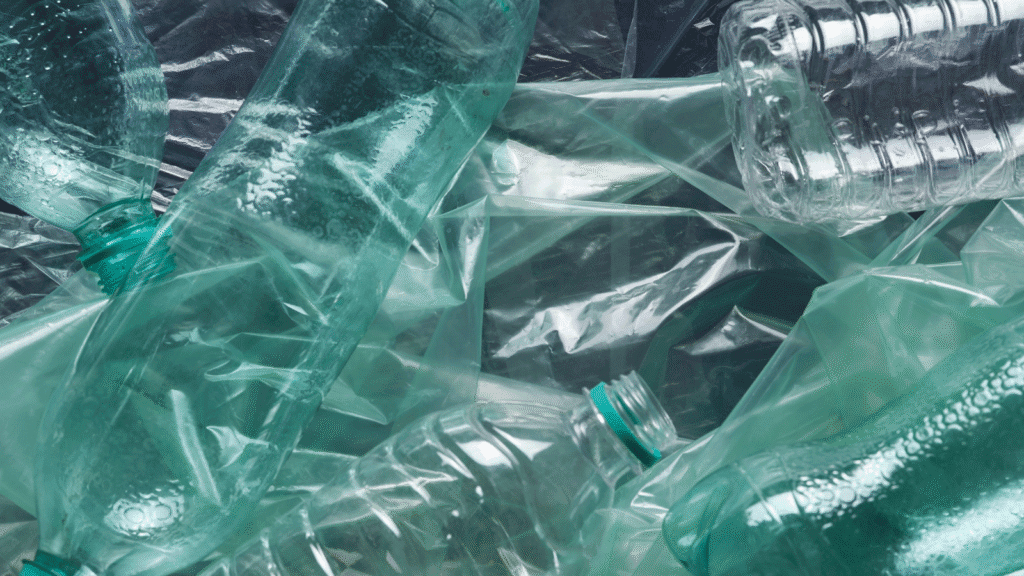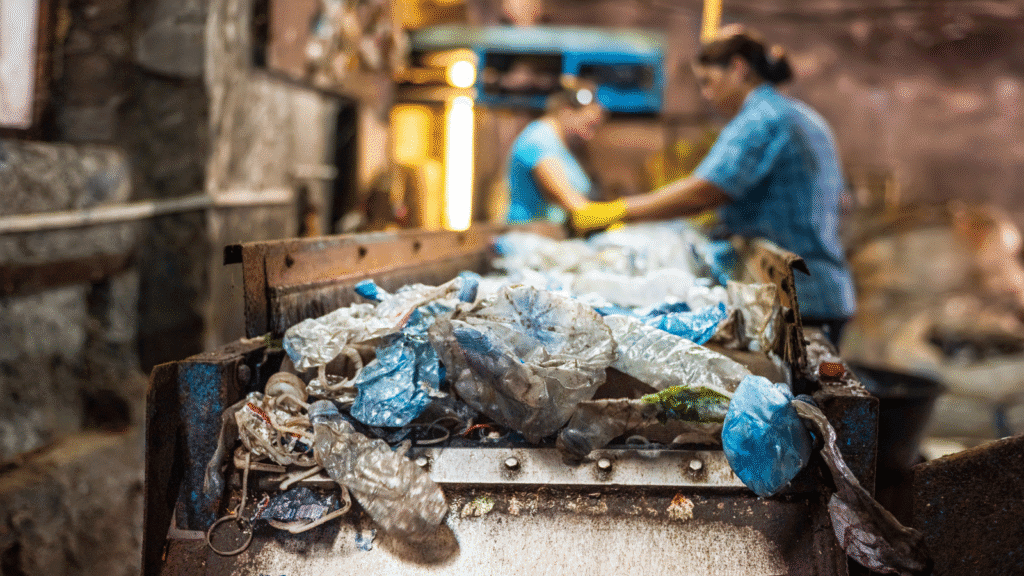Alinea Customs Briefing: Information on how to meet “end-of-waste” criteria for recycled LDPE imports and exports, concerning Article 6 of the EU Waste Directive.
Introduction
The transition towards a circular economy has become an imperative for governments, businesses, and regulators alike. In the United Kingdom, the management of plastic waste is one of the most pressing challenges. Low-density polyethylene (LDPE), widely used in packaging and film applications, is one of the most common plastics recovered from commercial and municipal waste streams. To reduce reliance on virgin polymer and to promote sustainable secondary markets, regulators have developed the concept of “end-of-waste” (EoW) status.
The designation of EoW represents a pivotal legal determination. Once a material achieves this status, it is no longer subject to the regulatory framework applicable to waste but instead becomes a “product” or “secondary raw material.” This change in classification removes the administrative burdens of waste controls, facilitates smoother movement across borders and supply chains, and enhances the commercial value of recycled materials.
This article examines the compliance framework for recycled LDPE pellets classified within HS code 390110 in the UK context, drawing on established criteria from the European Waste Framework Directive and detailed regulatory practice. It also considers an emerging input stream: LDPE recovered from undersea cables, which presents both opportunities and compliance challenges.
The Legal Basis of End-of-Waste
The foundation of EoW lies in Article 6 of the EU Waste Framework Directive (2008/98/EC). Following the UK’s exit from the European Union, the provisions were retained in domestic law through the Waste (England and Wales) Regulations 2011 and equivalent devolved legislation in Scotland, Wales, and Northern Ireland.
The Directive and Regulations provide that waste will cease to be waste when it has undergone a recovery or recycling process and meets specific criteria. Four core conditions must be satisfied:
Article 6 s. 1 (a) The material is commonly used for specific purposes
Article 6 s. 1 (b) is a market or demand for the material.
Article 6 s. 1 (c) The material fulfils relevant technical requirements and product legislation.
Article 6 s. 1 (d) The use of the material does not cause overall adverse environmental or human health impacts.
This framework is applied by UK regulators, including the Environment Agency (EA), the Scottish Environment Protection Agency (SEPA), Natural Resources Wales (NRW), and the Northern Ireland Environment Agency (NIEA).


End-of-Waste Criteria for Recycled LDPE Pellets
Waste Input Restrictions
The first and most critical stage in achieving EoW compliance is controlling the type of waste accepted as input. Only specific, non-hazardous LDPE sources may be used. These include:
- Non-hazardous pallet wrap and transit film used in logistics.
- Post-consumer LDPE film collected through dry mixed recycling.
- Cable sheathing, provided the plastic is segregated from other cable components and is demonstrably free of hazardous contamination.
Prohibited inputs include plastics from healthcare or personal hygiene products, hazardous waste plastics, and plastics contaminated with substances listed under the UK Persistent Organic Pollutants (POPs) Regulations and Regulation (EC) 850/2004 (as retained).
The standards on characterisation of plastics recycles include:
Operators must implement robust acceptance procedures: every delivery must be weighed, recorded, visually inspected, and accompanied by accurate documentation. It is advisable to quarantine non-conforming loads, and potentially redirect them to authorised waste facilities. Organisations should ensure compliance with ISO 9001:2015 Quality Management Systems (QMS). as best industry practice, and maintain record-keeping, to evidence due diligence in the event of enforcement action.
IS EN 15343: The industry standard for recycling traceability and assessment of conformity. This standard demonstrates compliance with the EU Directive on single use plastics, and may facilitate reduced tax obligations related to the UK’s Plastic Packaging Tax (PPT).
IS EN 15344: this standard demonstrates compliance with test methods and characteristics defining polyethylene (PE) recyclates for finished and semi-finished products.
IS EN 15345: this standard provides characterisation for assessing polypropylene (PP) recyclates to support the agreement on specifications for its use in semi-finished and finished products. Batches will address areas including colour, density, impact strength, melt flow rate, and shape.
Special Consideration: LDPE from Undersea Cables
An emerging source of LDPE suitable for recycling is the plastic sheathing used in submarine telecommunications and power cables. LDPE is widely used in these applications for its insulating and waterproofing properties.
Compliance Challenges
While this represents a potentially valuable resource, several challenges arise:
- Composite Structures: Submarine cables are multi-layered and contain metals, fibre optics, bitumen, and armouring materials. The LDPE fraction must be physically separated and certified free of non-plastic inclusions.
- Marine Contamination: Cables recovered from seabeds may carry salt, hydrocarbons, and biofouling organisms. Enhanced decontamination procedures must be part of the operator’s environmental management system (EMS).
- Hazardous Legacy Materials: Some older cables may contain prohibited substances, such as polychlorinated biphenyls (PCBs) or asphaltic compounds. Screening against POPs legislation is therefore essential.
Legal and Regulatory Requirements
For LDPE from submarine cables to qualify as an acceptable EoW input:
- Segregation – Only the LDPE fraction may be processed, with non-plastic components consigned separately to authorised facilities.
- Traceability – Provenance of the cable, including chain-of-custody documentation, must be established to confirm compliance with waste input restrictions.
- Testing – Compositional testing should confirm compliance with necessary standards, including a ≤2% non-plastic contaminant threshold.
- Declaration – The operator’s Declaration of Conformity must explicitly state the LDPE’s source and confirm compliance with REACH, Classification, Labelling and Packaging (CLP), and POPs legislation.
Regulatory Outlook
The Environment Agency and devolved regulators have not yet issued specific guidance on submarine cables. However, by applying the general principles of the EoW framework, there is scope to treat cable sheathing as a valid LDPE input stream. Operators seeking to do so should engage proactively with the relevant authority to ensure their permits and quality management systems are aligned with this novel source.
Processing and Treatment Requirements
Once inputs are accepted, recycling facilities must ensure that LDPE is handled separately from all other waste. Processes such as de-baling, shredding, washing, melting, filtering, re-granulating, and grading must be carried out under regulated conditions.
Compliance requires a documented procedure for each treatment step, integrated into the operator’s EMS. Any deviation, such as blending LDPE with other polymer streams, may undermine conformity with EoW requirements.
Quality Standards for Recycled LDPE
Recycled LDPE pellets must meet stringent technical standards before being deemed to have ceased to be waste. The principal standards include:
- EN 15343 – Recycled plastics: traceability and conformity assessment.
- EN 15344 – Characterisation of polyethylene recyclates.
- EN 15347 – Characterisation of plastic wastes.
Pellets must be suitable for direct use in plastic manufacturing processes without further treatment. Non-plastic content must not exceed 2% of moisture-free weight. This requirement necessitates routine gravimetric testing and may involve advanced techniques such as infrared spectroscopy for quality assurance.
Additionally, pellets must comply with retained UK REACH and CLP Regulations. This entails ensuring that recycled LDPE does not contain restricted substances and is properly classified and labelled.
Finally, recycled LDPE cannot be supplied for energy recovery or as a fuel substitute. The intent of EoW is to produce a genuine secondary material, not a feedstock for incineration.


Quality Management Systems
A certified quality management system (QMS) is mandatory for compliance. Operators must demonstrate certification to ISO 9001:2015 and EuCertPlast.
The QMS must cover:
- Staff training and competency verification.
- Waste acceptance controls and inspection protocols.
- Monitoring of recycling processes and quality outcomes.
- Sampling, analysis, and testing of outputs.
- Customer feedback on quality performance.
- Systematic record-keeping.
- Continuous review and improvement.
Regulators, including the Environment Agency, may require access to the QMS at any time. Failure to maintain certification can result in immediate reclassification of material as waste.
Record-Keeping and Documentation
A rigorous record-keeping system is central to compliance. Producers must retain records for at least five years, including:
- Details of all consignments leaving the site (date, quantity, customer details, destination).
- Results of monitoring, inspection, and analysis.
- Records of quarantined or rejected materials.
Each batch must be accompanied by a Declaration of Conformity (DoC). The DoC must:
- Confirm the recyclate is intended for plastic manufacture only.
- Certify compliance with REACH and CLP.
- Be supported by a safety data sheet.
- Be issued electronically or in hard copy, with retained duplicates.
Non-Compliance and Enforcement
Where criteria are not met, the material remains classified as waste. Circumstances that trigger non-compliance include:
- Non-compliance with Directive 2008/98/EC Article 6 S. 1 or lack of evidence to confirm compliance
- Excess contamination or non-plastic content.
- Indefinite storage without use.
- Disposal, abandonment, or mixing with other wastes.
- Lack of certified QMS evidence.
If a recycled LDPE product cannot confirm non-waste criteria, consideration should address whether the product can be classified as Article 18 “green-list waste”, and exported subject to provision of an Annex VII document issued by the exporter that must travel with the goods, if the consignment is being shipped to the European Union (EU) or an Organisation for Economic Cooperation and Development (OECD) country. A review of compliance should address whether the plastic can be classified in accordance with the requirements of the Basel code B3011. Further information is available from: https://www.gov.uk/guidance/importing-and-exporting-waste-plastic
Furthermore, the haulier transporting the goods must carry a certified waste licence.
Non-compliance exposes operators to waste management controls, enforcement action under the Environmental Protection Act 1990, and potential criminal liability. Penalties may include substantial fines and imprisonment.
Implications for UK Businesses
For recycling operators and manufacturers, compliance brings significant benefits:
- Commercial Value: Reclassified LDPE attracts higher market prices than waste.
- Regulatory Clarity: Businesses reduce exposure to waste shipment and permitting restrictions.
- Supply Chain Confidence: Manufacturers gain assurance of material quality and conformity with standards.
- Sustainability: Compliance supports corporate ESG strategies and alignment with extended producer responsibility (EPR) obligations.
However, these benefits are counterbalanced by the costs of certification, monitoring, and regulatory engagement. For emerging streams such as undersea cables, additional investment in separation and decontamination processes will be required.
Conclusion
The Environmental Agency has outlined that an operator can self-assess and declare their material as having met end of waste – however they must be able to demonstrate this with sufficient evidence and robust documentation. There must be clear evidence to demonstrate compliance with the conditions in Article 6 of the Waste Framework Directive (Directive 2008/98/EC of the European Parliament and of the Council of 19 November 2008 on waste and repealing certain Directives (Text with EEA relevance)) and, in turn, that the material is non-waste.
This may include but is not limited to: evidence of end-use within the importing destination, evidence that market demand for such a product exists, sampling analysis demonstrating that the product is free from contamination, and does not pose a risk to human or environmental health, and a supporting risk assessment in compliance with a quality management system framework.
For UK businesses, the key to success lies in rigorous input controls, adherence to technical standards, investment in certified management systems, and transparent documentation. By meeting these obligations, recycled LDPE can transition from “waste” to “resource,” contributing meaningfully to the circular economy and the UK’s sustainability objectives.
UK Government Guidance: https://www.gov.uk/guidance/importing-and-exporting-waste#exporting-waste-under-article-18-green-list-controls-
Email: WasteShipments_EB@environment-agency.gov.uk, dowservices@environment-agency.gov.uk for product specific guidance related to international movements.
For pastoral matters, please contact Claire Parker on 03708506506. Environment incident hotline Telephone (24 hour service) 0800 80 70 60 Type talk (for the hard of hearing) 0345 602 6340
For assistance with importing or exporting packaging, recycled and / or waste products, compliance consultancy related to international movements please email: customs@alineacustoms.com.


